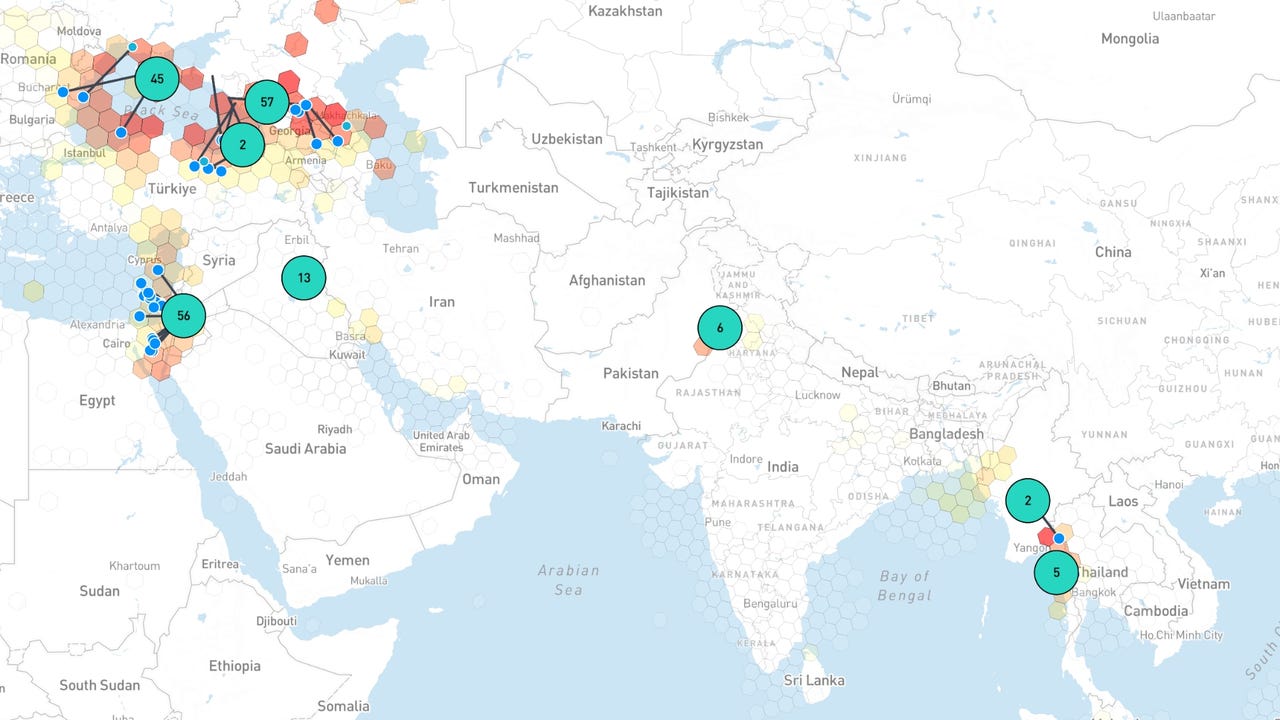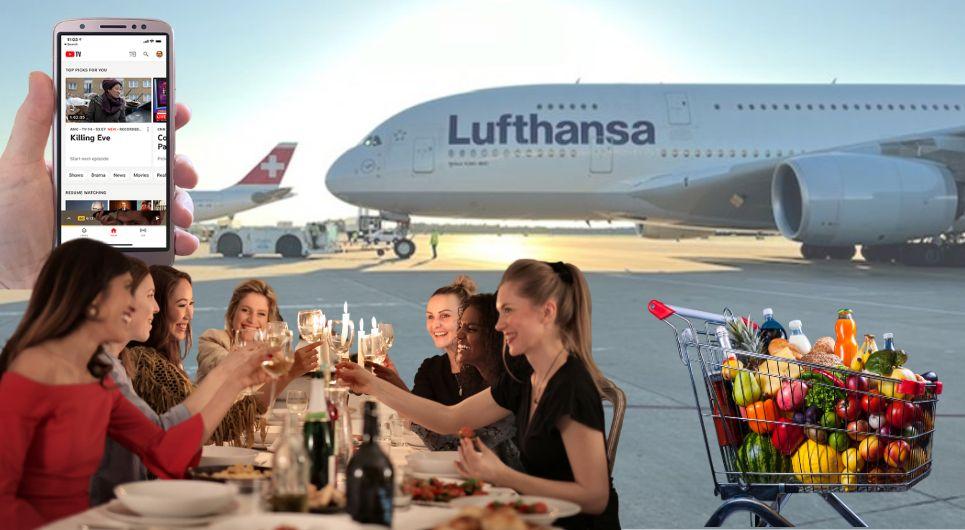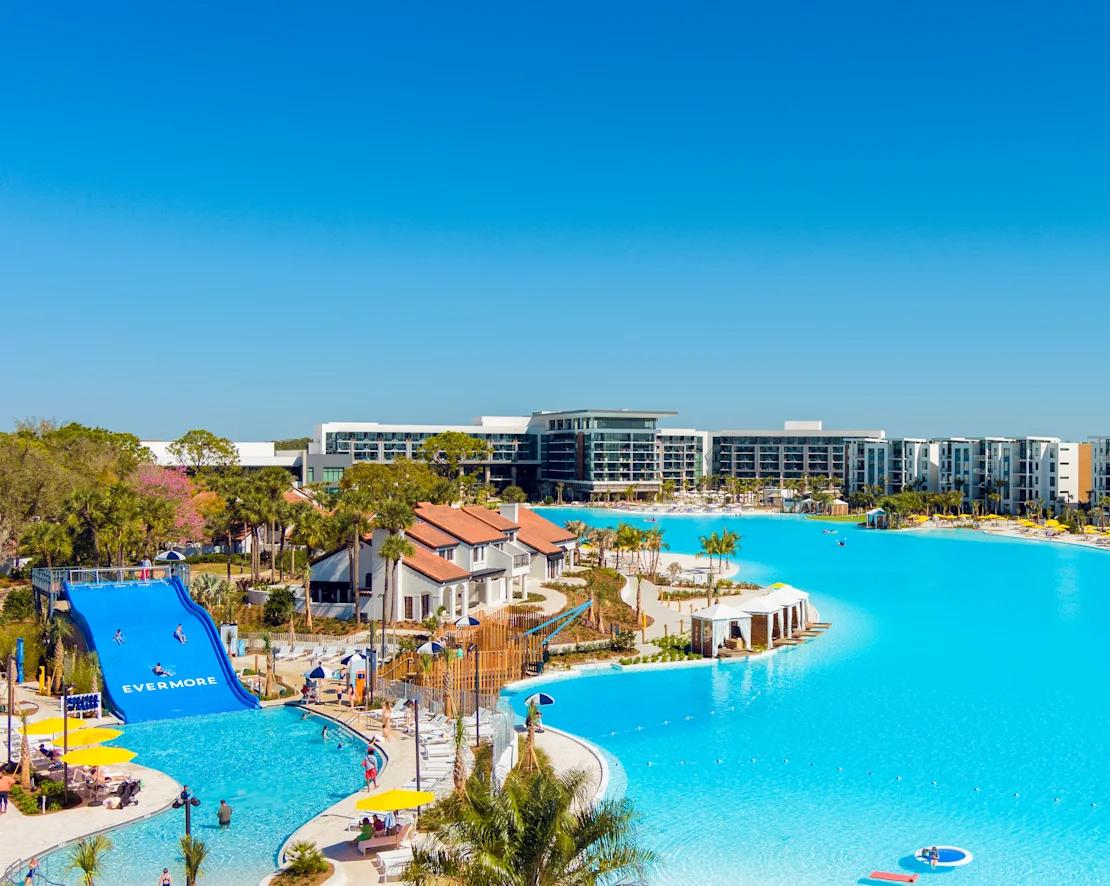The Practicalities and Pleasures of Homemade Train Food
Bárbara Tamilin Long-haul Amtrak rides are full of people who value a slower pace to life. Of course they eat the same way. As a nonflier and a travel writer, I spend a lot of time on trains. Train food, I’ve come to learn, is its own distinct and expansive category. It encompasses prime rib and crabcakes and the tinkling sound of wine glasses shaking in the premier train dining car; railway baron-style hotel restaurants with impeccably marbled rib-eye steaks and raw oysters flown into the Rocky Mountains; harrowingly timed DoorDash deliveries to refueling station stops and microwave nachos from the snack car; and coolers of food brought from home. I often bring my own food on long train rides: okra stew and crab rice, or perhaps my dad’s spaghetti and meatballs, as well as fruits and cakes, all packed in my trusted backpack cooler, along with an electric travel Crock-Pot that has saved me on many Amtrak trips. But as Amtrak’s California Zephyr looped around Donner Lake on a trip this past fall, I found myself — too tired to pack a meal this time around, and with a delivered bag of fast food as a consolation prize — sharing a meal with fellow passengers, siblings Elizabeth and Leon from Michigan. They had brought food, mostly grown or raised on their small farm: squash, radishes, grapes, boiled duck eggs, homemade bread, and nut mix. They were going camping in California and liked to remain healthy. “We want to know what we’re eating,” said Elizabeth. Another couple traveling from San Diego back home to Warren County, Ohio, brought their own food but also sometimes hit the dining car. “We think the food on the train is pretty good,” they said, mentioning they liked the omelets in the dining car for sleeper passengers, which has a better quality of food than the snack car (with my personal favorites being the French toast and Amtrak Signature Steak). “But we bring our own food on the train because of cost, more than anything.” They added, “You never know what’s going to happen, so it’s better to have food in your own control.” The people who have made homemade food part of train culture tend to have ideas about self-sufficiency, food sovereignty, and going back to the land. To Elizabeth, the food in the Amtrak dining car was good, but she preferred her own. When I asked them why her family grows their own food, Elizabeth said, “We help each other in our community, and we want to have a direct connection with the Earth and our food, and not have to go through other people [or companies] to get what we need.” That reasoning was almost identical to that of a group of Indian women on the train who had brought their own food — a mixture of vegetable curries and homemade breads like aloo paratha — and who all had gardens because they were tired of high grocery prices and low-quality produce. And in Chicago’s Union Station, surrounded by fast food, I once watched a child reach into a huge plastic tub of ice cream, relabeled in slanting marker as “Anna’s Sunday’s Best,” and pull out a homemade scone, the look of happiness radiating from her. There’s a sense of idealism baked into how we talk about homemade food — it’s nostalgic, it reminds us of home and heritage, and it’s aspirational — but the people who have made homemade food part of the culture on Amtrak trains aren’t outliers. Train food, like any other genre of food and perhaps more so, offers sociological insights into the culture and land that the track runs through, and the passengers who choose to travel this way. Today, you can catapult yourself through the sky and cross the entire continent of North America in five hours, while a train would take you 90 hours to get from New York to LA — 144 hours if you’re crossing Canada by VIA Rail. Train travel isn’t convenient or particularly cheaper than air travel, and feeding yourself for days on a moving train is a pain. So anyone who chooses slow travel thinks carefully about not just that decision, but what they’ll eat: It’s a slower, simpler way of life. Those who ride the train as a lifestyle and continue to make that choice, do, in my observations, tend to have these questions about self-sufficiency, food sovereignty, and going back to the land. Sometimes their solutions can be colonial — see the rise in homesteading on social media and its colonial background and practice — and sometimes they can be liberatory. Sometimes those solutions are communal, and sometimes they’re isolationist. The Amtrak train becomes a microcosm where these impulses are both heightened and ruminated on — and sometimes challenged — as people connect with each other in social spaces where food is often central. Leon and Elizabeth, as well as the couple traveling to Warren County, all happened to be Amish, a group that’s part of the Anabaptist religious tradition, which came out of the 16th-century Protestant Reformation, critiquing the excesses and expansive power of the Catholic Church. Simple livi


Long-haul Amtrak rides are full of people who value a slower pace to life. Of course they eat the same way.
As a nonflier and a travel writer, I spend a lot of time on trains. Train food, I’ve come to learn, is its own distinct and expansive category. It encompasses prime rib and crabcakes and the tinkling sound of wine glasses shaking in the premier train dining car; railway baron-style hotel restaurants with impeccably marbled rib-eye steaks and raw oysters flown into the Rocky Mountains; harrowingly timed DoorDash deliveries to refueling station stops and microwave nachos from the snack car; and coolers of food brought from home.
I often bring my own food on long train rides: okra stew and crab rice, or perhaps my dad’s spaghetti and meatballs, as well as fruits and cakes, all packed in my trusted backpack cooler, along with an electric travel Crock-Pot that has saved me on many Amtrak trips. But as Amtrak’s California Zephyr looped around Donner Lake on a trip this past fall, I found myself — too tired to pack a meal this time around, and with a delivered bag of fast food as a consolation prize — sharing a meal with fellow passengers, siblings Elizabeth and Leon from Michigan. They had brought food, mostly grown or raised on their small farm: squash, radishes, grapes, boiled duck eggs, homemade bread, and nut mix. They were going camping in California and liked to remain healthy. “We want to know what we’re eating,” said Elizabeth.
Another couple traveling from San Diego back home to Warren County, Ohio, brought their own food but also sometimes hit the dining car. “We think the food on the train is pretty good,” they said, mentioning they liked the omelets in the dining car for sleeper passengers, which has a better quality of food than the snack car (with my personal favorites being the French toast and Amtrak Signature Steak). “But we bring our own food on the train because of cost, more than anything.” They added, “You never know what’s going to happen, so it’s better to have food in your own control.”
To Elizabeth, the food in the Amtrak dining car was good, but she preferred her own. When I asked them why her family grows their own food, Elizabeth said, “We help each other in our community, and we want to have a direct connection with the Earth and our food, and not have to go through other people [or companies] to get what we need.”
That reasoning was almost identical to that of a group of Indian women on the train who had brought their own food — a mixture of vegetable curries and homemade breads like aloo paratha — and who all had gardens because they were tired of high grocery prices and low-quality produce. And in Chicago’s Union Station, surrounded by fast food, I once watched a child reach into a huge plastic tub of ice cream, relabeled in slanting marker as “Anna’s Sunday’s Best,” and pull out a homemade scone, the look of happiness radiating from her. There’s a sense of idealism baked into how we talk about homemade food — it’s nostalgic, it reminds us of home and heritage, and it’s aspirational — but the people who have made homemade food part of the culture on Amtrak trains aren’t outliers.
Train food, like any other genre of food and perhaps more so, offers sociological insights into the culture and land that the track runs through, and the passengers who choose to travel this way. Today, you can catapult yourself through the sky and cross the entire continent of North America in five hours, while a train would take you 90 hours to get from New York to LA — 144 hours if you’re crossing Canada by VIA Rail. Train travel isn’t convenient or particularly cheaper than air travel, and feeding yourself for days on a moving train is a pain. So anyone who chooses slow travel thinks carefully about not just that decision, but what they’ll eat: It’s a slower, simpler way of life.
Those who ride the train as a lifestyle and continue to make that choice, do, in my observations, tend to have these questions about self-sufficiency, food sovereignty, and going back to the land. Sometimes their solutions can be colonial — see the rise in homesteading on social media and its colonial background and practice — and sometimes they can be liberatory. Sometimes those solutions are communal, and sometimes they’re isolationist. The Amtrak train becomes a microcosm where these impulses are both heightened and ruminated on — and sometimes challenged — as people connect with each other in social spaces where food is often central.
Leon and Elizabeth, as well as the couple traveling to Warren County, all happened to be Amish, a group that’s part of the Anabaptist religious tradition, which came out of the 16th-century Protestant Reformation, critiquing the excesses and expansive power of the Catholic Church. Simple living, as Jamie Pitts, PhD, professor of Anabaptist Studies and director of the Institute of Mennonite Studies at Anabaptist Mennonite Biblical Seminary, calls it, is a cornerstone of the Anabaptist world, which includes both Mennonites and the Amish.
Amish people use less technology, speak Pennsylvania Dutch, grow more of their own food, and are more conservative; there’s a tendency amongst the Amish to not travel by plane, taking horses and buggies, hired drivers, or trains instead. Elizabeth plans on flying one day, but for her and her brother, riding Amtrak isn’t something they feel forced into doing. It’s something they do to connect with the land and take time for themselves, like reading and meditating in the observation car as the Nevada deserts speed past. “I just love the train, the scenery, and the traveling, and the people... it’s just relaxing,” says Leon.
The Amish have always been a source of fascination for the American public, which often treats them as the other. John Roth, project director and history professor of Anabaptist Studies at Goshen College, who is Mennonite (an Anabaptist group from which the Amish broke away in the 17th century but to which they still retain similarities and ties), says mainstream culture is often fetishizing towards Amish people. “We project onto them the embodiment of rugged, mythic, American ideals of a simpler time,” Roth says, pointing out that 4 million tourists come to Northern Indiana annually to observe Amish way of life. “The fascination is not evil, but it says more about the culture that is interested in the Amish than it does about the Amish.”
And because part of the Amish’s “deeply religious convictions recognize the way technology erodes our sense of connectedness,” according to Roth, there is perhaps no system in America where Amish and non-Amish regularly interact more than the Amtrak train system, where non-Amish regularly comment on the food Amish people bring onto the train. When I ask people if they brought their own food from home, I usually get one of two answers, sometimes both: first, with a laugh, “All I’ve brought is my own whiskey/wine.” Then, in a serious tone, “You should talk to the Amish.”
Even in a time where it seems like every other social media account is a brand-new homesteading influencer, when we think of slow eating, many of us may think of the Amish because of their values, which encourage frugality and simplicity. After eating Elizabeth and Leon’s homemade food, I wanted to understand what Amish food was, why it was so well-suited for long train journeys, and why it felt like a cousin to my mother’s Black Southern food traditions. Chef Chris Scott, who coined the term “Amish soul food” on Top Chef to describe his family’s culinary milieu, was the perfect person to speak to.
“Right after emancipation from slavery, my great-grandfather was the only one of 11 siblings to come up North from Virginia,” says Scott. Coatesville, Pennsylvania, where Scott’s great-grandfather ended up, was full of German and Dutch Amish whose food traditions influenced his Black family, leading to dishes like okra chow chow and homemade buckwheat crackers — both of which they took on long journeys. “By the time that I was born, this was the only food that my family knew,” Scott, who also wrote a cookbook on Amish soul food, says.
Marshall King, a food writer whose Amish grandparents had a house right by the Amtrak track, says Amish food does look a lot like Dutch, German, or American Southern food, but it has its own “hallmarks that are distinctive of Amish ethnic cuisine, which varies a bit by community.” He says that for example, in Lancaster County, Pennsylvania, shoofly pie is pretty common but in Indiana, raspberry cream pie, doughnuts, or fried pies are more popular. King says the fried pies — typically a glazed hand pie with a fruit filling — are “all the rage right now in Northern Indiana,” and stresses how much Amish bakeries are prized in many communities, being one of the primary ways — besides Amtrak — that non-Amish regularly interact with Amish people.
But defining features of both Amish and Southern cuisines are the methods used to preserve freshness, to cook seasonally, and to take food on long-distance travel. Amish food tends to keep well for obvious reasons: preserving crops and taking food on long journeys in the absence of quicker methods. Up until a few decades ago, Black Southerners found that stopping for food in the car to be a fraught experience due to racial terror. They faced discrimination during plane travel, and so mostly took trains, buses, and cars. They took preserved foods, or foods that don’t need to be heated up to be delicious — boiled eggs, ham, fried chicken, pickled vegetables. “For long journeys, a lot of the Amish and a lot of the Southerners will bake a lot of bread — especially potato bread — and different types of dumplings made from potatoes,” says Scott.
These kinds of foods became the bedrock of train food brought from home. While you can get steak or chicken in a butter sauce in the dining car, or while companies like YETI and Crock-Pot make long-distance travel easier with products that keep and hold elaborate meals for longer, simple foods that hold well still fill train passengers’ coolers.
As the California Zephyr meandered through the Rocky Mountains and the vastness of Utah, I reflected on my original decision to stop flying. It was ostensibly out of fear of flying, but I also hated the social pressure to fly, and the way you lose your autonomy upon boarding because you can’t get off. Not flying was a way of declaring my own sovereignty, an impulse that led to a longer journey of food sovereignty — learning to grow food, forage, fish, and hunt.
What is the immediate threat to me feeding myself? Why must I start changing the way I eat or defending the way I eat? Every generation must ask themselves this deeply political question. For the 16th-century Anabaptists, the answer to that question was the exploitation they faced from the tenant farmer system: Out of that rebellion came the realization that the only way for them to achieve food sovereignty or any other kind of autonomy would be to build their own intentional communities that reflected values that directly contrasted those that valued land exploitation. Centuries later, the cookbook Living More with Less by Doris Janzen Longacre, which Pitts considers to be one of the most influential Mennonite texts, was released amid the threat of environmental destruction. It offered a vision for how Mennonites and the larger society could reduce consumption through our eating habits, including maintaining home gardens.
For Indigenous people facing the theft of their land, the answer to these questions was and remains colonialism, and restaurants like Cafe Ohlone in Berkeley, California, serve decolonized dishes that tell the story of their fight for food sovereignty. For my mother’s family, it was racial terror and Black land theft; for myself and other Black people, owning land and farming on it feels like a pathway to survival and liberation. In 2020, the obvious answer was the COVID-19 pandemic, and many started to question the safety of our food systems — that questioning continues now as the bird flu is on the rise, impacting the meat and dairy industry. “Today, inflation is probably setting the immediate terms” for this political question of food and liberation, Pitts says. And for many — including liberal Mennonites — imperialism is a threat as well, as they see Israel starving Palestinians and wondering whether that weapon of war can also be used on them.
Roth says Amish thought is not about the unwillingness to utilize technology, but the question of its impacts. “So much of modern culture assumes that an innovation almost brings with it a moral imperative to adopt it,” Roth says. These assumptions — why wouldn’t we choose a mode of transportation that goes faster? — are what separates Amish people from the mainstream. Roth says, “The Amish simply have a stronger sociological and theological filter for asking with each technological innovation, what is its impact on the community?”
The Amish restrictions against airplanes, for Roth, are a way of ensuring that all aspects of someone’s immediate community are always within sight of where they live. “The decision to consciously choose community over efficiency or the collapse of time and space is a way the Amish have maintained their culture,” he says. But constant technological pushes don’t just erode community. They erode the earth, they erode food systems, they erode economies, and they erode the ability of this generation to live a good life.
“Slowly [technology] is getting into the lifestyle,” Elizabeth says. “We really have to keep asking ourselves now, how much do we want it? And make our own boundaries and convictions.”
My lunch companion and fellow sleeper passenger on the train one day was Carolyn Miles, an 82-year-old woman from Tennessee by way of Kansas. Her love of trains started early; her grandfather headed up freight travel for the Cleveland and Ohio Railroad and she often tagged along with him after World War II ended. “He was not a very nice man, but he was a good executive,” she told me as we ate patty melts in Amtrak’s dining car, with caramelized onions Carolyn enjoyed.
Her mother — who had a flourishing garden, just as Carolyn does now — would make meals for them on these journeys; fried chicken, apples, cookies — classic train food, things that wouldn’t spoil and would taste good cold. “Fried chicken holds well. My mother made really good fried chicken. Oh, my goodness,” Carolyn says.
Creaking through the mountains of Northern California, we talked about how the high cost of living was ruining this generation. “I worry that with the stress of my kids and grandchildren, they might not live as long as I have,” Carolyn said frankly. “My dad fought in the war and I was born during the war, so life wasn’t easy. But life felt more comfortable then. There’s not much comfort now.”
She went on, crediting much of the despair and stress she saw today to a lack of community. “When I was younger, you needed people. You communicated with people. You needed them to be successful. And now it’s kind of like you live in your own little bubble.” She added quietly, “I don’t like what’s ahead. So I’m glad I’m not going to be here to see it.”
As the train pulled through the mountains of Colorado heading towards Denver, I came across a 27-year-old-man from Los Angeles. He had not brought his own food, and after traveling on Amtrak for months, he was sick of the microwave hot dogs and chips and paying $20-45 to eat in the dining car with the sleeper passengers, whose meals came included with their pricier ticket.
His dream, he told me as he looked at the farms that flew past in the window, was to have his own land and grow food on it. “I’m tired. Tired of all the crazy shit going on in the world. Tired of giving the government and everybody else my money. I want something that’s mine.”
For chef Scott, food becomes an answer where people often land after asking themselves about their basic needs. “It starts with, where am I going to put my head down at night? Where is the money going to come from? We have to eat, but I don’t know if wanting to know how to grow and raise their own food comes into their head, until they answer those questions,” he says.
On long-haul trains, various people coalesce around a loosely common goal: the search for a way of life that’s slower, more intentional, more free — whether that life is a deviation from what America tried to force them to accept or closer to the mythic ideal of the America they think they want. Either way, they end up coming together — a natural consequence of wonderers and wanderers traveling for hours across this continent.
“When any of us travel, I think the question is how much are we engaging with each other and how much are we engaging with the culture around us?” says King. “If someone opens the lunch that they brought with them on the train and it smells amazing, but nobody else in the train car says a word, then it was just their lunch. But if it prompts some sort of conversation or interaction or communal aspect, then there’s layers of richness there of people learning about each other and learning about each other’s cultures.”
Once, I rode Amtrak’s Texas Eagle along the U.S.-Mexico border in El Paso when the conductor suggested we buy tamales from a lady selling them wrapped in towels near the tracks. Afterwards, the entire observation car was filled with people eating tamales, all of us connecting with this electric synergy of community, reveling in a shared core memory. King says, “If we can operate out of abundance rather than scarcity, really cool things can happen.”
When I reached my destination in Oakland after 100 hours on the California Zephyr, I headed to the soul food restaurant Burdell. I had a train back to Chicago the next morning, and of course, I was already thinking about what I’d eat. So I ordered some roasted duck with dirty rice and duck cracklings and duck confit — all tangy with the addition of some apple cider vinegar — some cornbread, and chocolate chip cookies with benne seeds. And on the train back to Chicago, I ate it as I gazed out the window into the fog-blanketed Sierra Nevada mountains, feeling sated. Whether you grow it yourself or take it from a restaurant, the best train food all comes down to one thing: connection — to yourself, your community, and the land you travel.
Bárbara Tamilin is an illustrator and painter based in Curitiba, Brazil.










































































